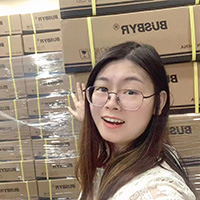News
Photovoltaic power generation system refers to a power generation system that uses the photovoltaic effect of photovoltaic cells to directly convert solar radiation energy into electrical energy. Among them, the photovoltaic inverter (PV inverter or solar inverter) is an inverter that can convert the variable DC voltage generated by photovoltaic (PV) solar panels into the mains frequency alternating current (AC), which can be fed back to the commercial power transmission system. Or for off-grid grid use. Photovoltaic inverter is one of the important balance of system (BOS) in photovoltaic array system, which can be used with general AC power supply equipment. The inverters on the market mainly include micro inverters (250W~1KW), string inverters (1KW~150KW), and centralized inverters (above 100KW).
Stand-alone inverters: Used in stand-alone systems, the photovoltaic array charges the battery, and the inverter uses the DC voltage of the battery as the energy source. Many stand-alone inverters also incorporate a battery charger that can charge the battery from AC power. Generally, this kind of inverter will not touch the grid, so it does not need the island effect protection function.
Grid-tie inverters: The output voltage of the inverter can be fed back to the commercial AC power supply, so the output sine wave needs to be the same as the phase, frequency and voltage of the power supply. The grid-connected inverter will have a safety design, if it is not connected to the power supply, it will automatically turn off the output. If the power grid power trips, the grid-connected inverter does not have the function of backing up power supply.
A grid-tie inverter (GTI for short) is a special inverter. In addition to converting DC power to AC power, its output AC power can be synchronized with the frequency and phase of the mains power, so the output AC power can be returned to mains. Grid-connected inverters are commonly used in applications where some DC voltage source (such as a solar panel or a small wind turbine) is connected to the grid.
In many countries, homes or companies with grid-connected power systems can sell the electricity they generate to the power company. Electricity sent back to the grid is subsidized in a few different ways. Net metering electricity price means that households or companies with renewable energy equipment receive subsidies according to the net energy they send back to the grid. If the electricity is 100 kW-hour, then the subsidy will be received at 400 kW-hour. In the United States, net energy policies vary by jurisdiction. Another policy is the feed-in tariff subsidy policy, where every kilowatt-hour of electricity generated is subsidized according to the subsidy method listed in the contract with the transmission company.
From the perspective of the photovoltaic inverter market, modern society pays more and more attention to environmental protection, and the concepts of carbon neutrality and carbon peaking have gradually become the consensus of all countries. Many countries have begun to pursue the field of new energy. As a renewable energy source, photovoltaic energy has the advantages of non-pollution and low cost. It is cleaner than thermal power generation and has more relaxed conditions than hydropower and wind power generation. Driven by the above multiple factors, the photovoltaic industry is affected by It has been favored by many countries and supported by many policies. The installed capacity of photovoltaics has been greatly increased, and the photovoltaic power generation system industry has developed rapidly.


